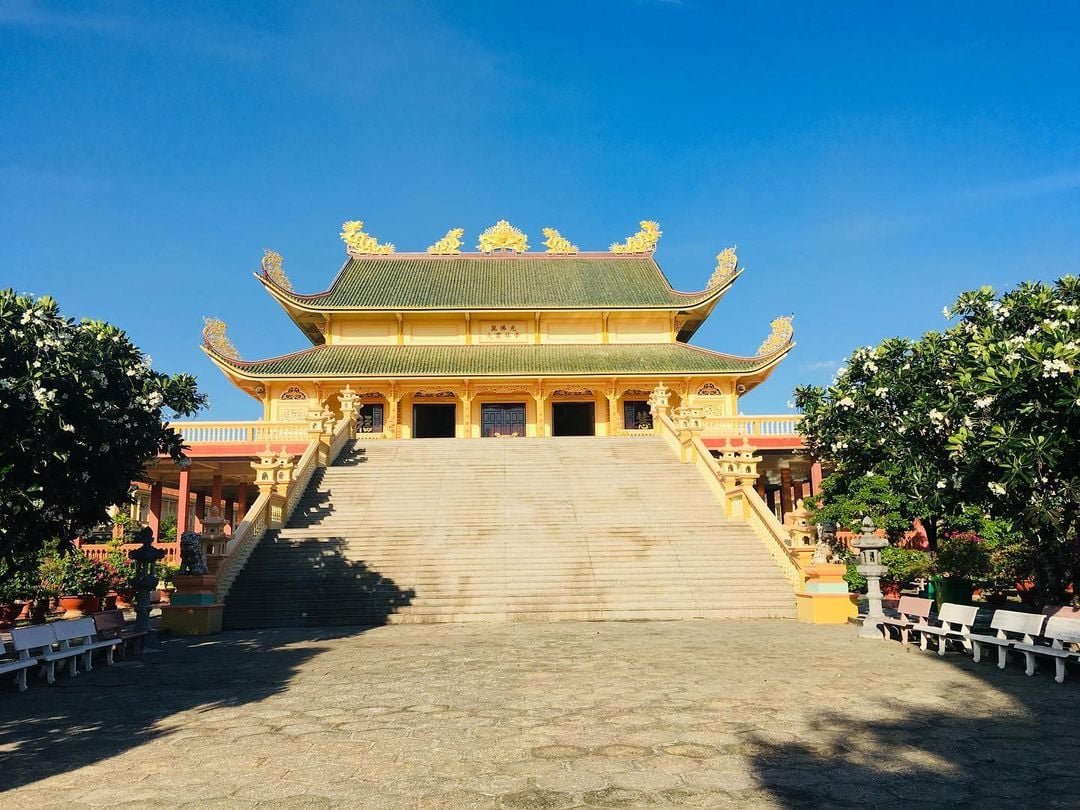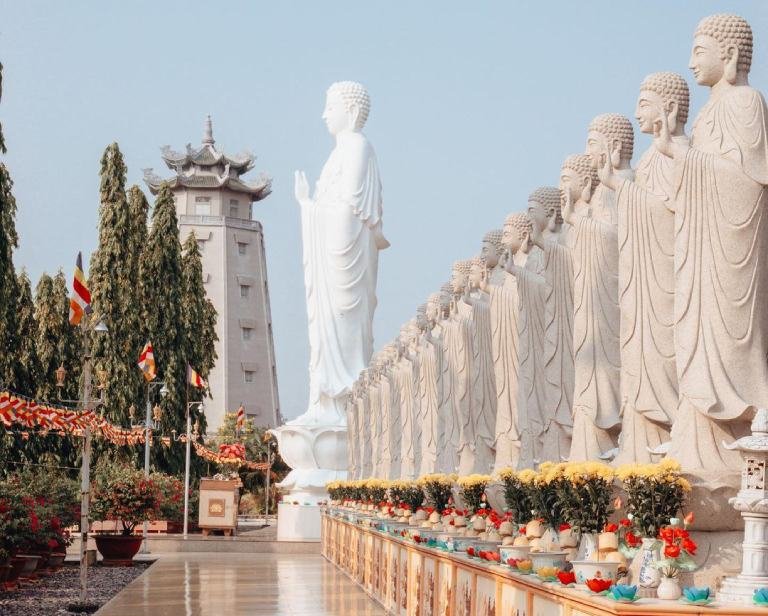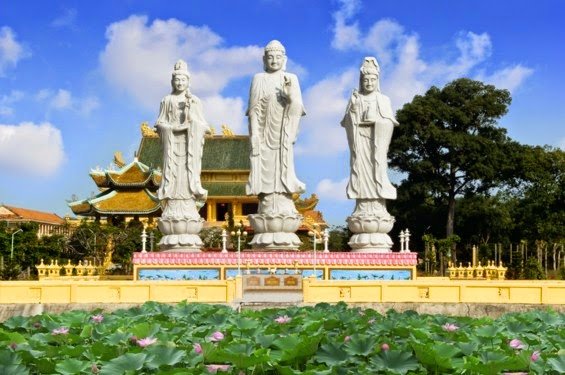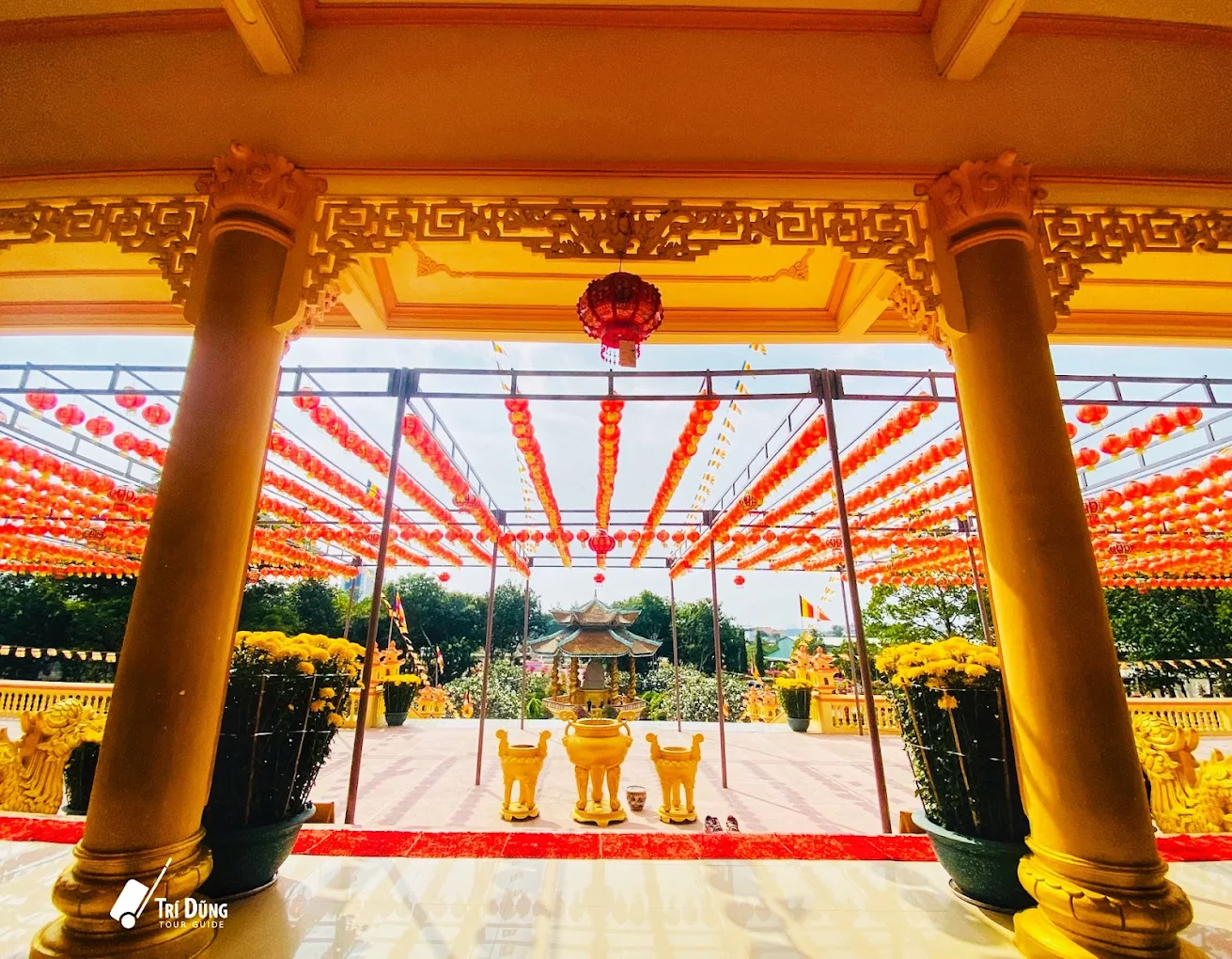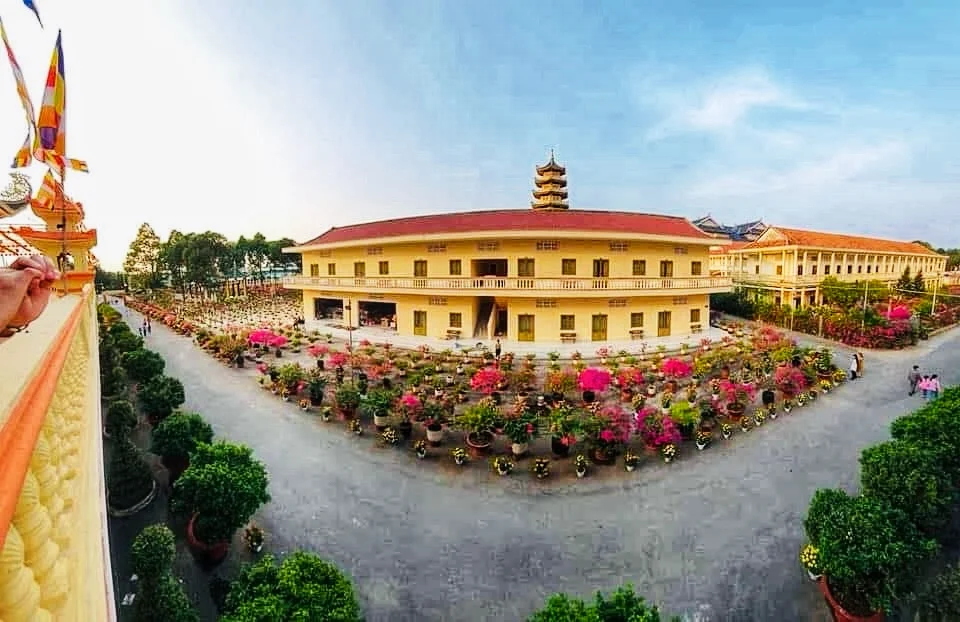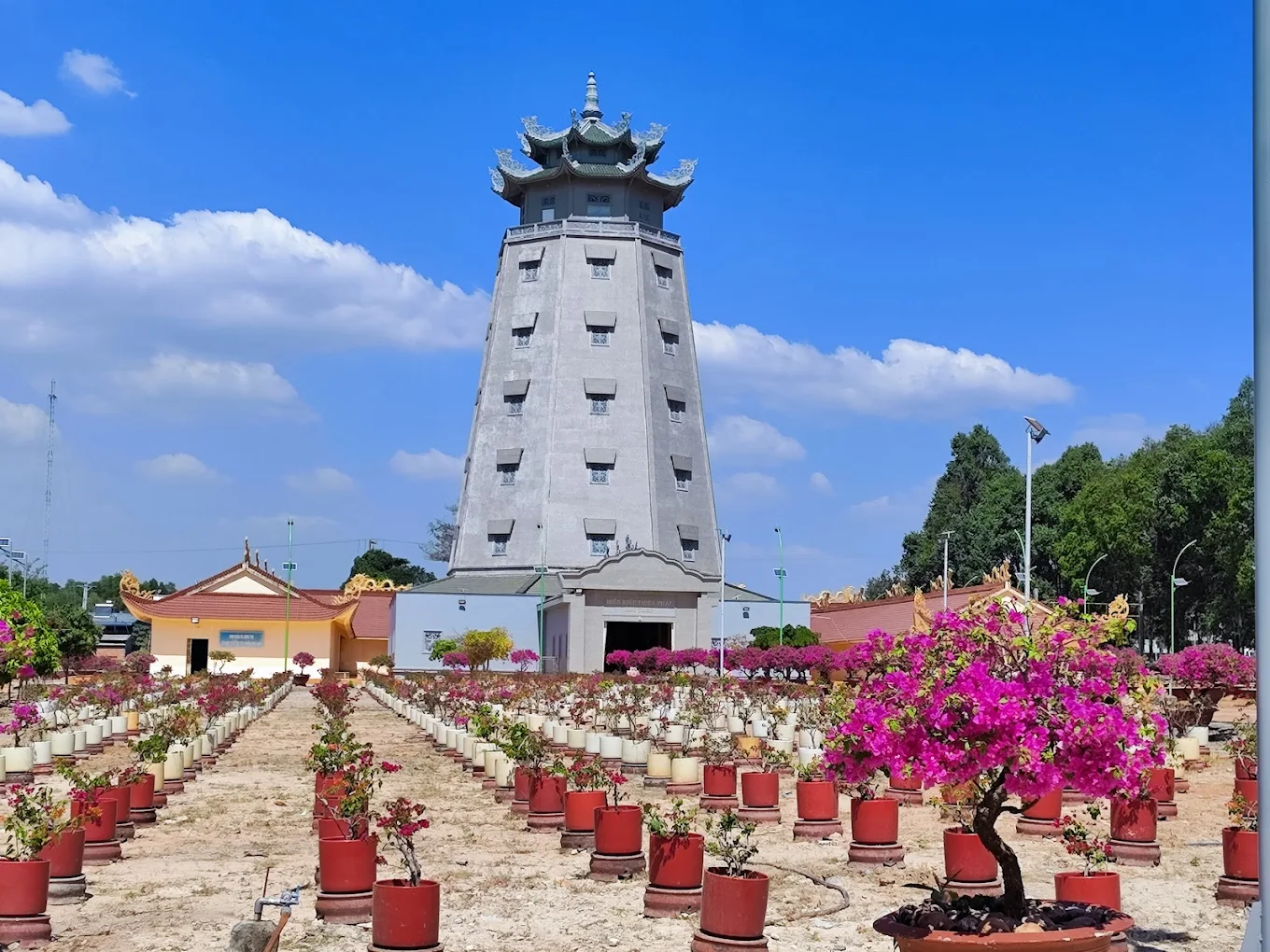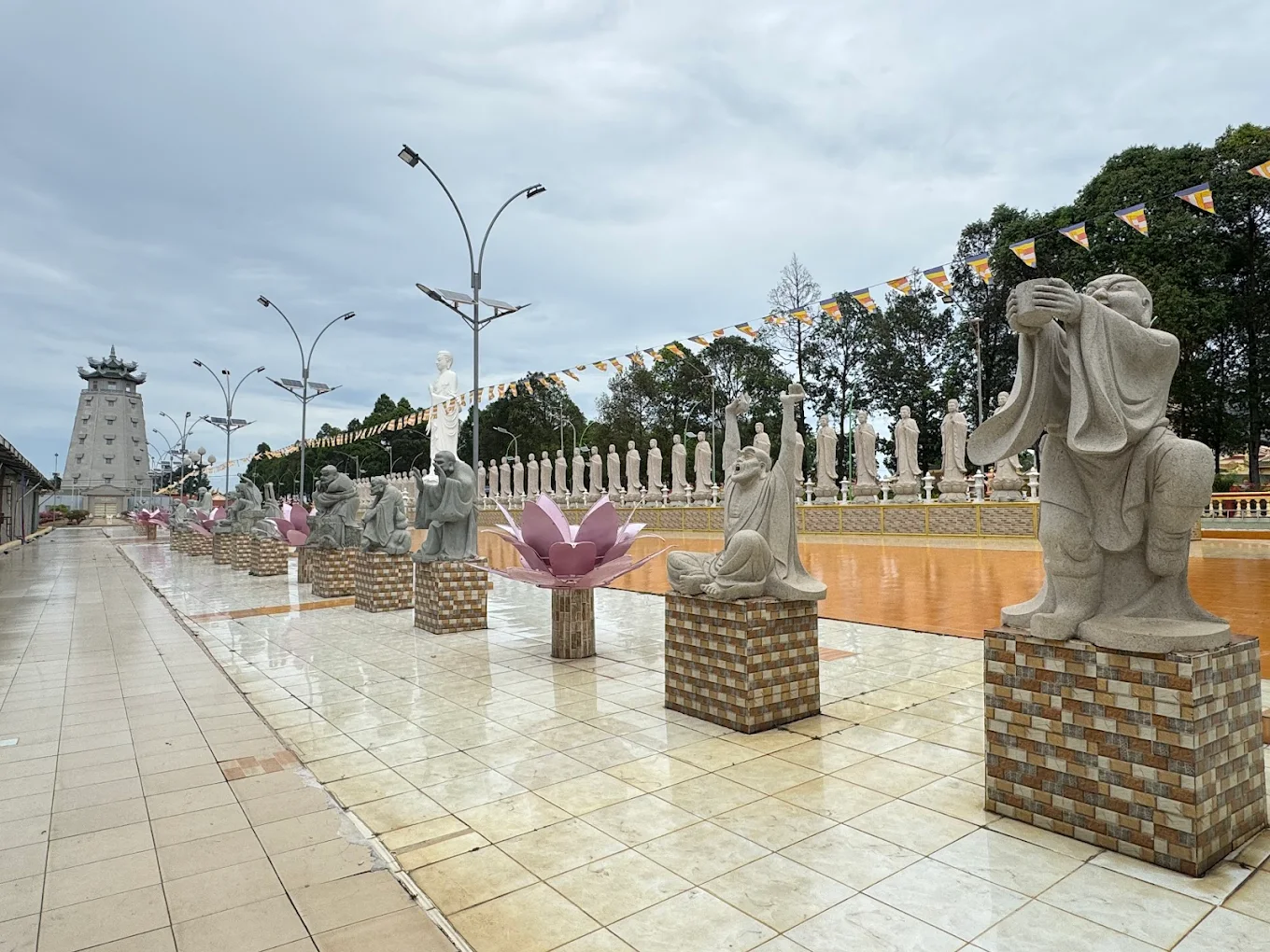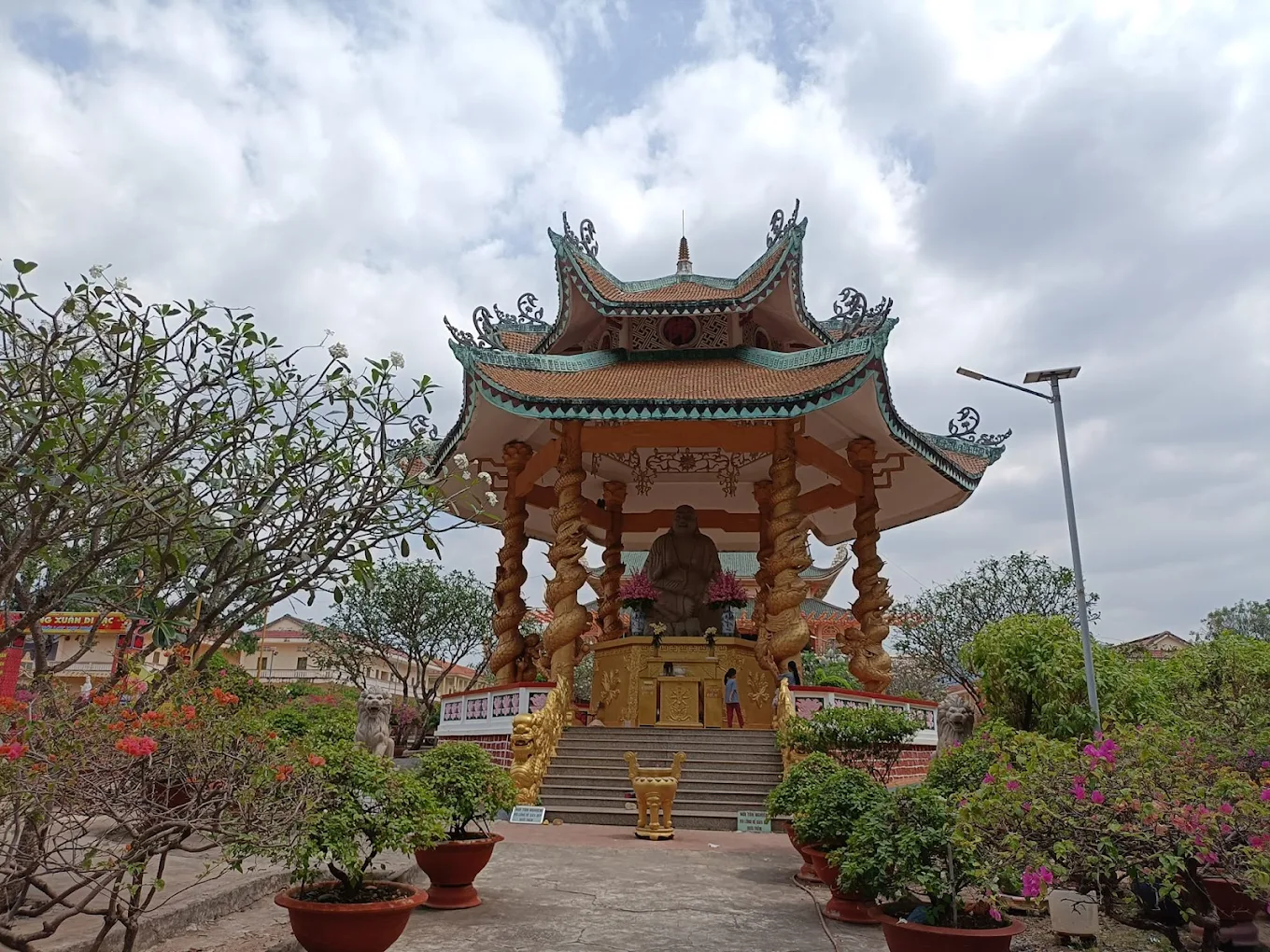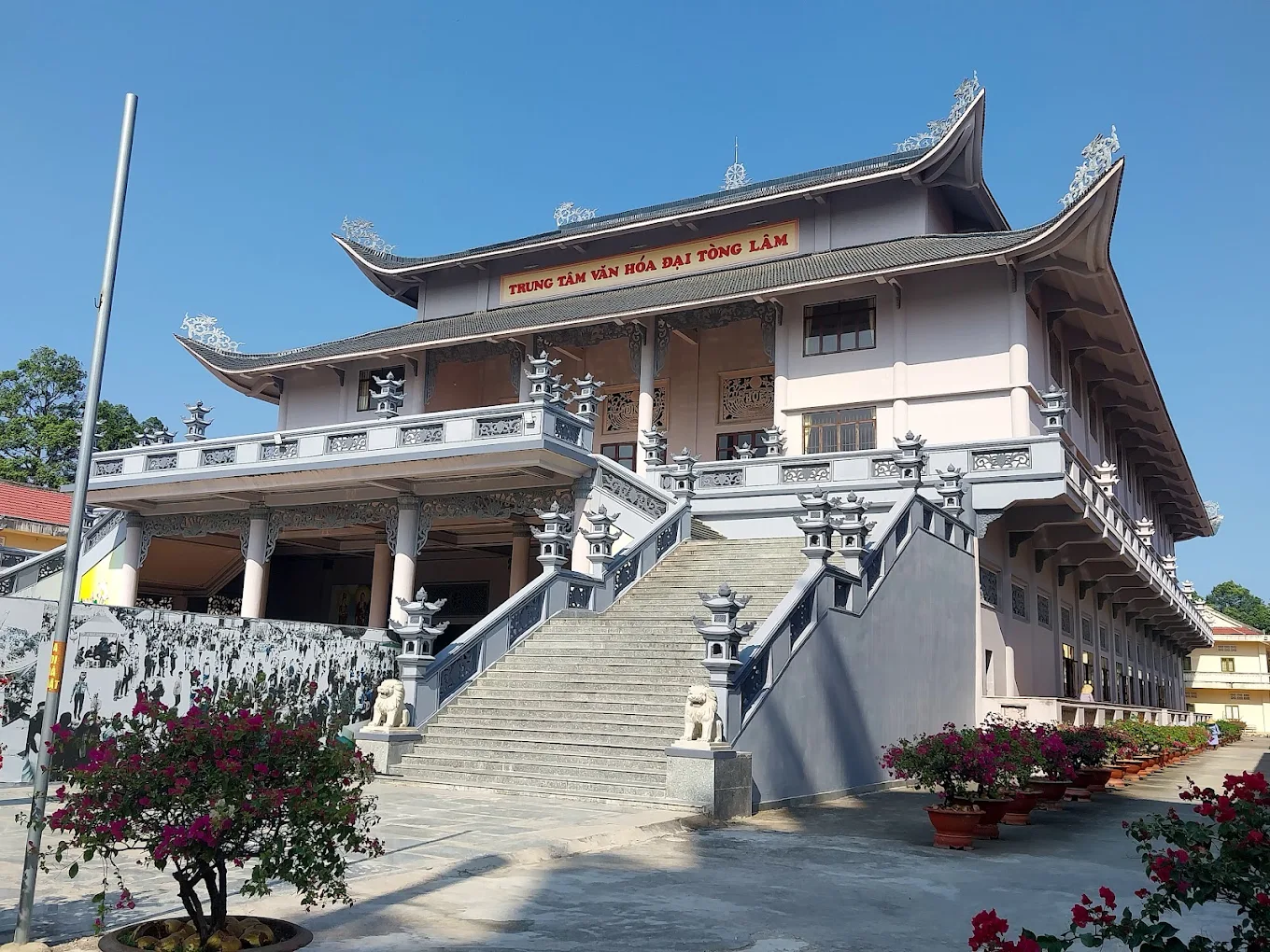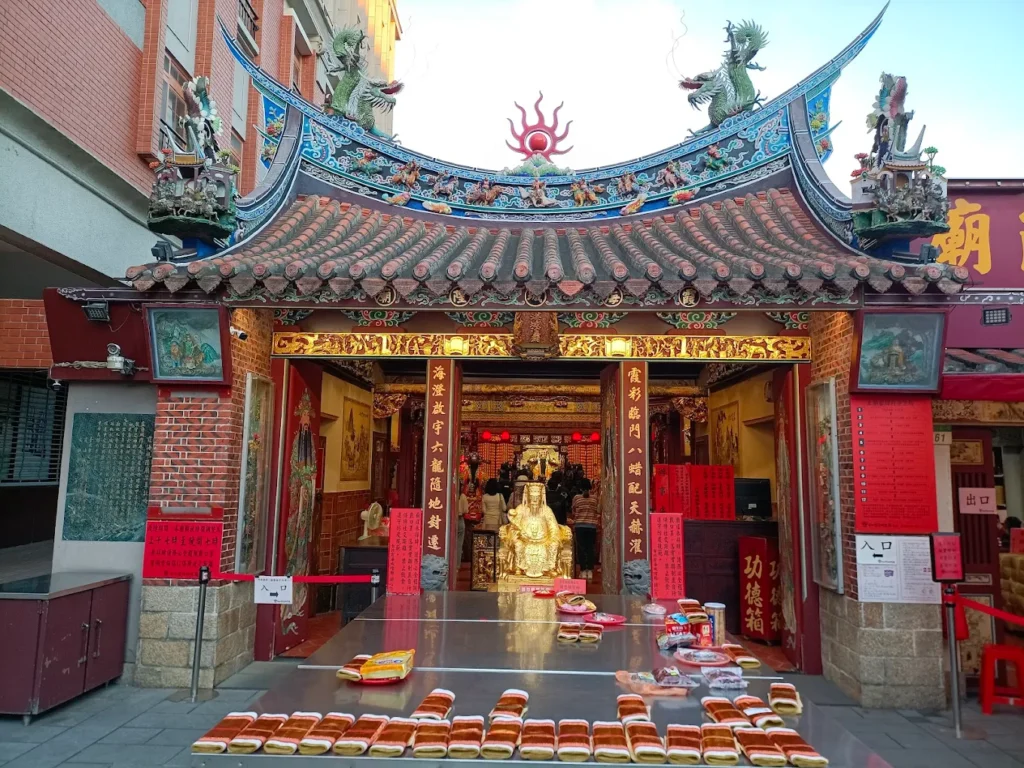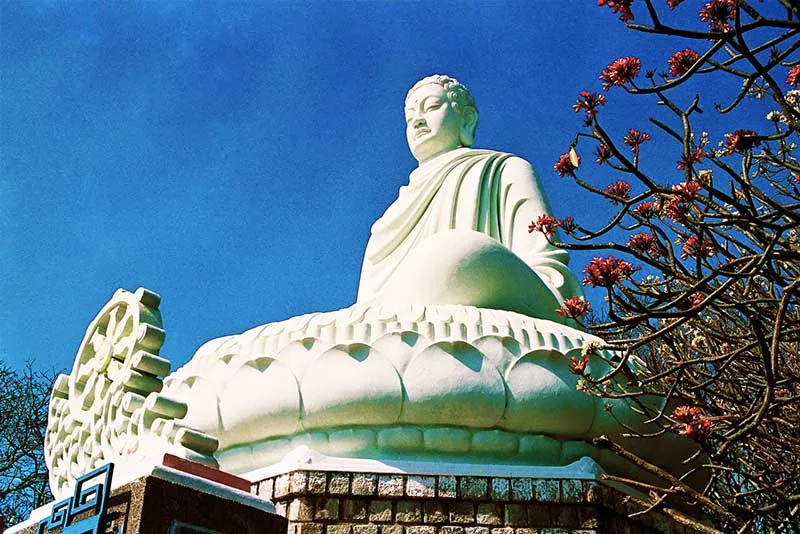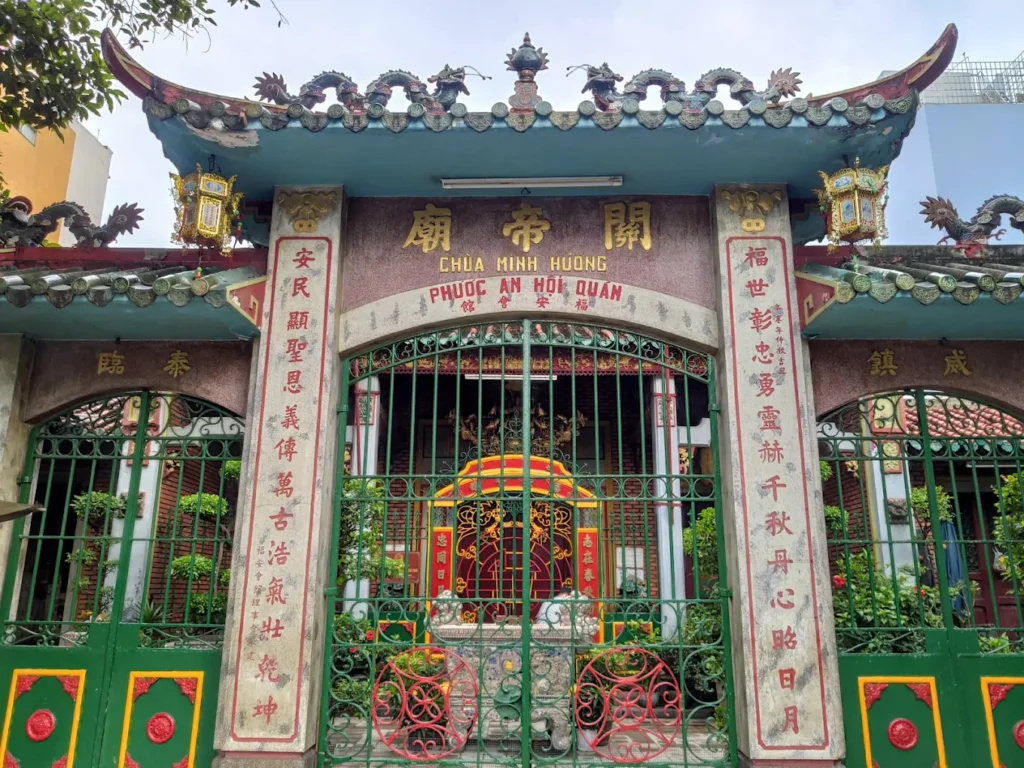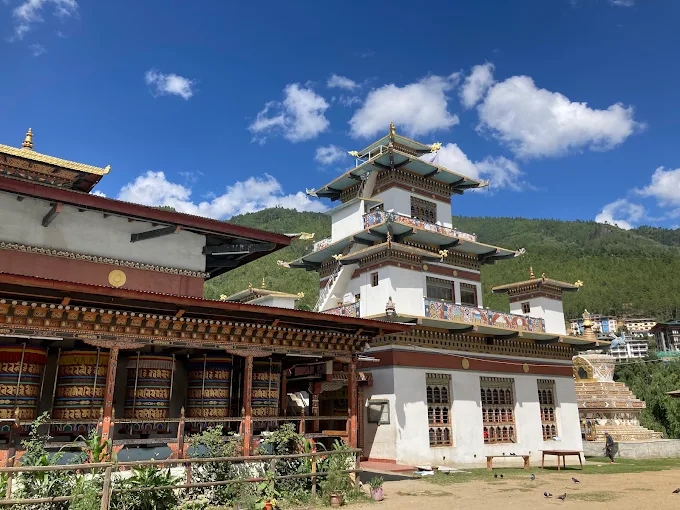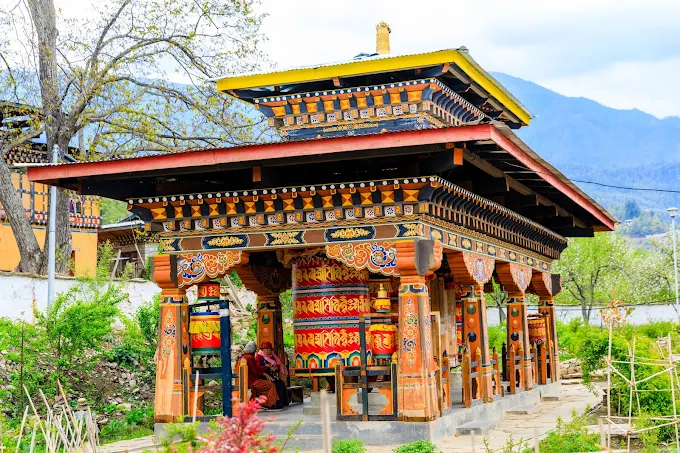Đại Tòng Lâm Pagoda: The Majestic Haven of Vũng Tàu’s Buddhist Legacy
As dawn breaks over Vũng Tàu’s Phú Mỹ, the first rays illuminate the golden spires of Đại Tòng Lâm Pagoda, where the scent of sandalwood incense mingles with the rustle of ancient pines. In the main hall (chánh điện), monks chant the Lotus Sutra before a towering statue of Shakyamuni Buddha, their voices echoing across a 100-hectare sanctuary. Founded in 1958 by Venerable Thích Thiện Hòa, this Mahayana Buddhist complex, officially named Vạn Phật Quang Đại Tòng Lâm Tự, holds six national records, including Vietnam’s largest main hall and the monumental Tam Thánh Cực Lạc statues. Its sprawling grounds, dotted with lotus ponds and 10,000 gilded Buddha images, pulse with spiritual devotion. Each incense stick lit honors the Buddha’s wisdom, guiding devotees toward enlightenment. From its perch along Quốc lộ 51, the pagoda overlooks Vũng Tàu’s coastal plains, a serene beacon inviting travelers, seekers, and scholars to explore Vietnam’s Buddhist heart.
Whispers of Enlightenment: Overview and Significance
Introduction to Đại Tòng Lâm Pagoda
Đại Tòng Lâm Pagoda, nestled in Khu phố Quảng Phú, Phường Phú Mỹ, Vũng Tàu City, is a monumental Mahayana Buddhist complex, renowned for its six national records and role as a Buddhist training hub. Spanning 100 hectares, it blends modern and traditional architecture, offering a tranquil retreat amid Vũng Tàu’s coastal vibrancy. The name “Vạn Phật Quang” (Light of Ten Thousand Buddhas) reflects its spiritual radiance, shaped by Venerable Thích Thiện Hòa’s vision of a grand Buddhist institute. A cultural and spiritual landmark, the pagoda draws pilgrims and visitors seeking wisdom and peace.
Historical Journey
Đại Tòng Lâm Pagoda was founded in 1958 by Venerable Thích Thiện Hòa, a revered monk from Chùa Ấn Quang, with the goal of creating a major Buddhist center for training monks and nuns (Tăng Ni). By 1964, the complex began taking shape, with the main hall completed in 2002 under Venerable Thích Quảng Hiển. The 1995 establishment of the Trường Phật học Đại Tòng Lâm solidified its role as an educational hub. Despite wartime challenges, the pagoda’s growth reflects the Kinh community’s dedication, making it a national spiritual icon.
Cultural Significance
- Mahayana Devotion: Rooted in Mahayana Buddhism, the pagoda centers on Shakyamuni, Amitabha, and Avalokitesvara, guiding devotees toward enlightenment.
- Ethnic Vietnamese Heritage: A spiritual anchor for the Kinh, it preserves rituals like sutra chanting and An Cư Kiết Hạ retreats.
- Educational Hub: Home to the Trường Phật học, it trains thousands of monks and nuns, shaping Vietnam’s Buddhist future.
- Regional Influence: Festivals draw Buddhists from Bà Rịa-Vũng Tàu and beyond, fostering spiritual unity.
Unique Legacy
- Six National Records: The pagoda holds records for Vietnam’s largest main hall (3,000 m²), most Buddha statues (10,000+), largest Di Lặc statue, most monks and nuns (1,250+), largest Tam Thánh Cực Lạc statues, and most Amitabha statues in the Cửu Phẩm Cực Lạc garden.
- Monumental Scale: Its 100-hectare campus is a testament to Buddhist ambition.
- Training Center: The Trường Phật học shapes Vietnam’s monastic community.
- Spiritual Symbol: Its grandeur reflects Mahayana’s universal compassion.
Community and Global Impact
- Local Devotion: The pagoda hosts retreats and festivals, strengthening Kinh Buddhist bonds.
- Pilgrimage Hub: Thousands visit annually, drawn by its records and serenity.
- Global Appeal: International Buddhists seek its educational legacy and tranquil grounds.
- Cultural Dialogue: Shared rituals unite locals and global visitors, fostering understanding.
Modern Relevance
- Spiritual Retreat: The pagoda offers peace amid modern life’s chaos.
- Cultural Preservation: It safeguards Mahayana practices, ensuring Vietnam’s Buddhist heritage thrives.
- Educational Legacy: Its training programs influence Buddhist scholarship nationwide.
Historical Anecdotes
- Founder’s Vision: Thích Thiện Hòa’s dream of a grand Buddhist institute drove its creation.
- War-Time Resilience: The pagoda endured conflicts, rebuilt by devoted monks.
- Record Recognition: Its six national records, certified between 2006 and 2010, elevated its fame.
Social Role
- Community Hub: Festivals and retreats unite Vũng Tàu’s Buddhists.
- Educational Center: The Trường Phật học trains monks and educates laypeople.
- Charitable Spirit: Vegetarian feasts reflect Mahayana’s generosity.
Artistic Influence
- Architectural Art: The main hall’s gilded statues inspire local artists.
- Cultural Icon: The Tam Thánh statues grace Huế’s cultural imagery.
- Festival Art: Lotus lanterns and dragon carvings showcase Kinh craftsmanship.
The vast grounds of Đại Tòng Lâm Pagoda, shimmering with gilded statues and lotus ponds, are more than a physical marvel; they embody a spiritual legacy rooted in Mahayana devotion. From Venerable Thích Thiện Hòa’s founding vision to its modern role as a Buddhist training hub, the pagoda’s history weaves a tapestry of faith and resilience. Its monumental architecture, crowned by the largest main hall in Vietnam, invites exploration of its sacred spaces, where statues and gardens reflect profound Buddhist ideals. As we delve into its architectural and spiritual features, the pagoda’s grandeur reveals how it nurtures both devotion and enlightenment.
Crafted by Wisdom: Architectural and Spiritual Features
Iconic Design
Đại Tòng Lâm Pagoda’s architecture blends Vietnamese Mahayana tradition with modern grandeur, creating a majestic sanctuary across 100 hectares. Red-tiled roofs and dragon-adorned walls harmonize with lush gardens, reflecting Buddhist balance. The layout, centered on the main hall, prioritizes spiritual function, with lotus ponds and statue gardens enhancing meditative calm. Its strategic location along Quốc lộ 51, near Vũng Tàu’s coastal plains, amplifies its serene yet commanding presence.
Key Structures
- Main Hall (Chánh Điện): A 3,000 m² two-story masterpiece, housing 10,000+ gilded Buddha statues, built in 2002.
- Tam Quan Gate: A grand stone entrance, rebuilt in 2007, with dragon reliefs.
- Tam Thánh Cực Lạc Garden: Features three massive granite statues (Amitabha, Avalokitesvara, Đại Thế Chí), record-holding for size.
- Cửu Phẩm Cực Lạc Garden: Hosts 48 Amitabha statues, each 3.3 meters tall.
- Đa Bảo Tower: A 1983 structure honoring past Buddhas, surrounded by pines.
- Lâm Tì Ni and Lộc Uyển Gardens: Commemorate the Buddha’s birth and first sermon.
- Trường Phật học: A 1995 educational complex for 1,000 monks and nuns.
- Meditation Halls: Quiet spaces for Tăng Ni practice.
Worshipped Statues
- Shakyamuni Buddha: A golden statue in the main hall, depicting meditation, symbolizes enlightenment.
- Tam Thánh Cực Lạc: Granite statues of Amitabha (15m), Avalokitesvara (13.7m), and Đại Thế Chí (13.7m), crafted in 2009–2010, embody Pure Land salvation.
- Di Lặc Buddha: A 40-ton granite statue, record-holding for size, radiates joy.
- Spiritual Role: Devotees offer incense to Shakyamuni and Amitabha, seeking wisdom and rebirth.
Materials and Techniques
- Construction: Granite, teak, and concrete, joined with Vietnamese techniques, ensure durability.
- Artistry: Dragon carvings and ceramic tiles, crafted by Kinh artisans, reflect Mahayana symbolism.
- Cultural Essence: The design blends traditional Buddhist aesthetics with modern scale, unique to Vũng Tàu.
Signature Elements
- Main Hall: Its 3,000 m² scale, adorned with 10,000+ gilded statues, holds a national record.
- Tam Thánh Statues: The massive granite trio symbolizes Pure Land devotion.
- Lotus Ponds: Reflect purity and calm, enhancing meditative spaces.
Lesser-Known Features
- Stone Inscriptions: Tablets near the main hall bear 1960s prayers.
- Hidden Shrine: An alcove for Patriarch Đạt Ma, used for special rituals.
- Vintage Bell: A 1998 bronze bell, weighing 1 ton, resonates during ceremonies.
Preservation Efforts
- Restoration (2002): The main hall’s completion preserved traditional elements.
- Challenges: Coastal humidity erodes stonework, requiring regular maintenance.
- Modern Additions: Solar lanterns enhance evening accessibility.
Environmental Integration
- Garden Harmony: Lotus ponds and pines preserve the ecosystem.
- Eco-Practices: Monks promote tree planting, reflecting Buddhist ethics.
- Wildlife Haven: Gardens shelter birds, enhancing serenity.
Artisan Narratives
- Statue Sculptors: Huế artisans crafted the Tam Thánh statues with precision.
- Tile Makers: Local kilns produced dragon-adorned tiles, blending tradition and art.
- Garden Designers: Monks shaped lotus ponds, symbolizing purity.
Symbolic Details
- Dragon Motifs: Signify divine protection and enlightenment.
- Lotus Ponds: Represent purity rising above suffering.
- Gilded Statues: Reflect Mahayana’s radiant wisdom.
Landscape Integration
- Coastal Plains: The pagoda’s open grounds enhance meditative focus.
- Pine Groves: Provide shade and spiritual calm.
- Lotus Ponds: Mirror the Buddha’s teachings in nature.
The monumental architecture of Đại Tòng Lâm Pagoda, from its record-breaking main hall to its serene lotus ponds, serves as a stage for its vibrant spiritual practices. The Tam Thánh statues and gilded Buddhas are not mere ornaments but focal points for rituals that connect devotees to Mahayana ideals. These sacred spaces, alive with chants and offerings, invite visitors to engage with the pagoda’s living traditions. As we explore its rituals, the pagoda’s role as a spiritual and educational hub comes to life, guiding both monks and pilgrims toward enlightenment.
Rites of the Pure Land: Rituals and Practices
Daily Sacred Rites
- Morning Chanting: Monks recite the Lotus Sutra at dawn, fostering mindfulness.
- Meditation Sessions: Silent meditation, held twice daily, centers on Pure Land devotion.
- Incense Offerings: Devotees light sandalwood incense before Shakyamuni and Amitabha.
Unique Practices
- Pure Land Chanting: Reciting Amitabha’s name, seeking rebirth in the Pure Land, a Mahayana hallmark.
- An Cư Kiết Hạ: Annual three-month retreats for monks, record-holding for attendance.
- Signature Ritual: Offering lotus flowers to the Tam Thánh statues, tied to the pagoda’s Pure Land focus.
Festival Traditions
- Buddha’s Birthday (8th day, 4th lunar month): Lantern processions and statue bathing draw thousands.
- Ullambana Festival: Candle-lit offerings honor ancestors, uniting families.
- Quan Âm Festival (19th day, 2nd lunar month): Flower processions celebrate Avalokitesvara’s compassion.
- Statue Veneration: Statues are adorned with silk during festivals, symbolizing reverence.
Visitor Engagement
- Accessible Rituals: Visitors can join chants or offer incense, guided by monks.
- Offerings: Flowers and incense, available at the pagoda shop, invite participation.
- Buddhist Etiquette: Bow three times before statues, signaling respect.
Spiritual Community Roles
- Monastics: Over 1,250 monks and nuns lead rituals and train at the Trường Phật học.
- Lay Devotees: Kinh volunteers organize festivals and maintain grounds.
- Statue Care: Daily cleaning of statues reflects devotion.
Interfaith Connections
- Syncretic Practices: Some blend Buddhist chants with folk offerings, honoring local deities.
- Outreach: Festivals welcome diverse faiths, fostering unity.
- Education: Monks teach Mahayana principles to visitors.
Ritual Symbolism
- Lotus Offerings: Symbolize purity transcending suffering.
- Incense Smoke: Represents prayers reaching the divine.
- Chanting Rhythm: Aligns mind and spirit with Pure Land ideals.
Seasonal Variations
- Spring Festivals: Vibrant with lotuses, ideal for Buddha’s Birthday.
- Autumn Rites: Cooler weather enhances calm during Ullambana.
- Monsoon Season: Chants under rain offer unique serenity.
Monastic Life
- Daily Routine: Monks rise at dawn for chants, meditation, and study.
- Community Service: Monks guide lay devotees and maintain gardens.
- Training Hub: The Trường Phật học trains monks for national Buddhist leadership.
The rituals of Đại Tòng Lâm Pagoda, from daily chants to grand festivals, breathe life into its monumental spaces, connecting devotees to the Pure Land’s promise. The Tam Thánh statues, radiant with offerings, invite visitors to engage with Mahayana traditions, whether through meditation or festival participation. For travelers, these practices offer a glimpse into Vũng Tàu’s Buddhist heart, accessible within the pagoda’s serene grounds. As we turn to visitor information, the pagoda’s vast campus and educational role guide practical planning, ensuring a meaningful journey to this spiritual haven.
Journey to Serenity: Visitor Information
Navigating to Đại Tòng Lâm Pagoda
- Location: Khu phố Quảng Phú, Phường Phú Mỹ, Vũng Tàu City, Bà Rịa-Vũng Tàu Province, along Quốc lộ 51.
- Landmarks: Near Phước Trung Gas Station and Trần Xuân Độ Street, with clear Vietnamese and English signs.
- Routes: Accessible by taxi, motorbike, or bicycle from Vũng Tàu’s center, following Quốc lộ 51.
Address of Đại Tòng Lâm Pagoda
- Vietnamese: Chùa Đại Tòng Lâm, Khu phố Quảng Phú, Phường Phú Mỹ, Thành phố Vũng Tàu, Tỉnh Bà Rịa-Vũng Tàu.
- English: Đại Tòng Lâm Pagoda, Quảng Phú Quarter, Phú Mỹ Ward, Vũng Tàu City, Bà Rịa-Vũng Tàu Province.
Visiting Hours and Etiquette
- Hours: Open daily, 5:00 AM–9:00 PM, with rest from 11:30 AM–1:00 PM; extended festival hours.
- Etiquette: Dress modestly, remove shoes before the main hall, and speak softly.
- Mahayana Custom: Offer incense with both hands and bow to statues.
Transport Options
- By Taxi: A reliable choice from Vũng Tàu’s center, with drop-off near the Tam Quan gate.
- By Motorbike: Offers flexibility to explore nearby sites.
- By Bicycle: A scenic ride along Quốc lộ 51 suits active visitors.
Accessibility and Safety
- Mobility: The main hall’s 47 steps may challenge those with mobility issues; flat areas are accessible.
- Safety: Well-maintained paths and monastic presence ensure security.
- Tips: Wear comfortable shoes for steps and bring water.
Amenities and Surroundings
- Facilities: Restrooms, a vegetarian dining hall, and a shop offer incense and Buddhist texts.
- Nearby: Bãi Sau Beach and Đình Thắng Tam, within 10 km, offer cultural experiences.
- Dining: Vegetarian meals at Ni viện Thiên Hòa, known as “chùa bánh xèo,” align with Buddhist values.
Immersive Visitor Tips
- Best Timing: Early morning visits offer serene chants and cooler temperatures.
- Sensory Moments: Inhale lotus-scented air and hear the bronze bell for deeper calm.
- Statue Connection: Offer incense to the Tam Thánh statues and meditate briefly.
- Festival Planning: Attend Quan Âm Festival for vibrant processions.
Nearby Cultural Experiences
- Đình Thắng Tam: A historic shrine, 10 km away, tied to local festivals.
- Bãi Sau Beach: Enjoy Vũng Tàu’s coast, a short ride away.
- Sông Hương Context: While not nearby, boat trips on the distant Hương River offer cultural parallels.
Photography Tips
- Best Angles: Capture the Tam Thánh statues at dawn for soft light.
- Respectful Shots: Avoid photographing monks during prayers without permission.
- Scenic Views: The Cửu Phẩm garden offers stunning shots of aligned statues.
- Equipment: A smartphone or lightweight camera suffices.
The journey to Đại Tòng Lâm Pagoda, guided by its monumental scale and serene grounds, is both a physical and spiritual pilgrimage, inviting visitors to engage with its Buddhist traditions. The pagoda’s vast campus, alive with chants and statues, offers a window into Vũng Tàu’s spiritual heart, where enlightenment feels within reach. Beyond its physical grandeur, the pagoda’s deeper cultural and spiritual significance enriches the experience, revealing the essence of Mahayana Buddhism. As we explore these insights, the pagoda’s role as a beacon of wisdom and compassion comes into sharper focus, deepening our connection to its sacred legacy.
Cultural and Spiritual Insights
Mahayana Philosophy
Đại Tòng Lâm Pagoda embodies Mahayana’s core: compassion and wisdom as paths to enlightenment. Shakyamuni and Amitabha inspire devotees to seek rebirth in the Pure Land, reflected in chants and feasts. “Emptiness” underscores interconnectedness, encouraging release of ego.
Environmental Spirituality
The pagoda’s lotus ponds and pine groves tie it to Buddhist reverence for nature. Chants resonate with the campus’s greenery, fostering meditative calm. The ecosystem invites reflection on harmony with the natural world.
Artistic Symbolism
Dragon motifs signify divine protection, while lotuses represent purity. The Tam Thánh statues embody Pure Land salvation, their granite forms radiating compassion. These elements weave Buddhist ideals into the pagoda’s aesthetic.
Community Resilience
Built by Kinh devotees, the pagoda reflects perseverance through wartime and growth. Its role as a training hub showcases collective faith, sustained by volunteer-led festivals.
Environmental Stewardship
The pagoda’s gardens foster Buddhist environmental ethics. Tree-planting initiatives and wildlife-friendly grounds enhance serenity. Visitors are urged to honor nature’s sanctity.
Meditative Practices
Mahayana meditation visualizes Amitabha’s Pure Land. The meditation halls, guided by monks, offer spaces for inner peace, amplified by the pagoda’s calm.
Cultural Narratives
- Founder’s Legacy: Thích Thiện Hòa’s vision shaped a national Buddhist center.
- Monastic Tales: Monks share stories of training and devotion.
- Festival Lore: Quan Âm Festival chants carry centuries-old traditions.
Historical Context
- Buddhist Revival: The pagoda’s educational role strengthened Vietnam’s Buddhism.
- Nguyễn Legacy: Its growth reflects Vũng Tàu’s cultural continuity.
- Modern Impact: National records elevated its spiritual prominence.
Reflecting on the Journey
Đại Tòng Lâm Pagoda, with its towering Tam Thánh statues and vast main hall, is a sanctuary where wisdom meets compassion. Its 100-hectare grounds, alive with lotus ponds and gilded Buddhas, embody Vũng Tàu’s Buddhist soul, inviting all to seek enlightenment. The pagoda’s legacy, from Thích Thiện Hòa’s vision to its role as a training hub, tells a story of resilience and unity. Whether meditating before Shakyamuni, walking the serene gardens, or tracing Vietnam’s Buddhist heritage, visitors find a space to reflect and connect. As you depart, the echo of chants and scent of lotus linger, a reminder that peace is always within reach.
